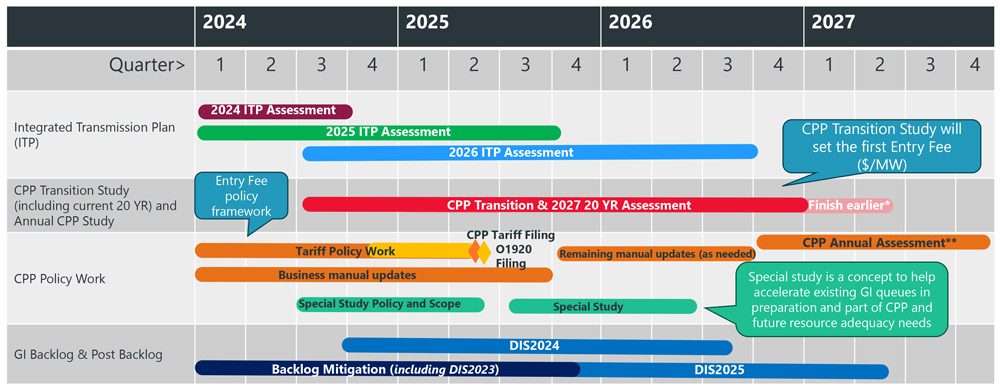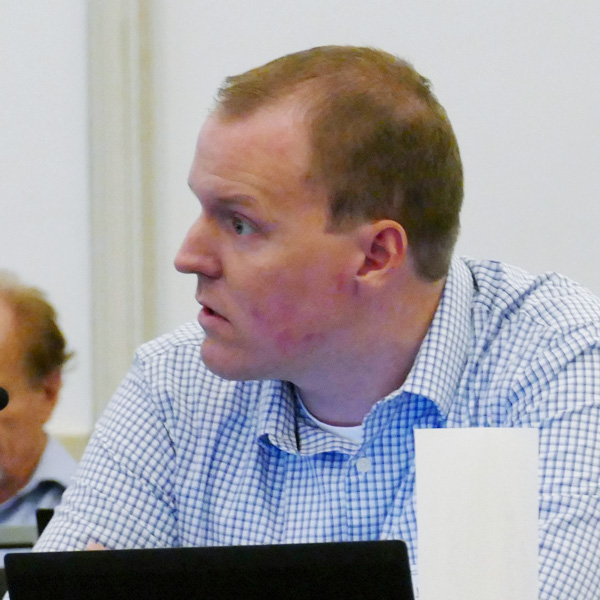With Massachusetts’ legislative session ending July 31, lawmakers are on the clock to reach an agreement on a major climate bill centered around clean energy permitting and siting reform.
Culminating over a year-and-a-half of work on a wide range of proposed climate legislation, the Senate passed an omnibus bill in late June (S.2838), and the House of Representatives followed with its own legislation on July 17 (H.4884).
The bills contain closely aligned changes to how the state permits clean energy infrastructure but vary significantly beyond the permitting provisions and have elicited mixed responses from clean energy advocates in the state.
Permitting reform has been a major focus of the session. A state commission — featuring the House and Senate co-chairs of the Joint Telecommunications, Utilities and Energy Committee — issued recommendations in April. This was followed by negotiations between the two chairs and the administration of Gov. Maura Healey (D). (See Mass. Commission Issues Recs on Energy Project Siting, Permitting and Mass. Lawmakers Aiming for an Omnibus Climate Bill in 2024.)
The resulting proposal would streamline and consolidate state and local permitting of clean energy infrastructure. For large projects, the state’s Energy Facilities Siting Board (EFSB) would approve them through consolidated permits that encompass “all municipal, regional and state permits that the large or small clean energy infrastructure facility would otherwise need to obtain individually.”
Municipal permitting would remain under local control but be incorporated into the consolidated EFSB process. For smaller projects, all municipal permits similarly would be consolidated into a single application and approval process.
For large clean energy infrastructure projects — defined as including generation, storage, transmission and distribution infrastructure — the EFSB would be tasked with setting approval timelines that are specific to the infrastructure type, capped at 15 months after an application is deemed complete. Only the final consolidated permit could be appealed to the Massachusetts Supreme Judicial Court.
The approval timelines for small projects would be capped at 12 months. The local permitting decision could be contested with the EFSB, which would have six months to either affirm or overrule the local permitting decision.
The clean energy permitting provisions have received strong support from renewable developers.
“The solar and storage industry is glad to see lawmakers continue to push forward on common-sense reforms to reinforce the commonwealth’s place as a national clean energy leader,” Valessa Souter-Kline, the Solar Energy Industries Association’s Northeast regional director, said in a statement. “The reforms include time limits for permitting decisions, a streamlined appeals process and more predictable interconnection that will provide critical certainty for solar and storage businesses.”
Dan Dolan, president of the New England Power Generators Association, praised the approval time frames and consolidated EFSB process, adding there’s “a meaningful benefit to sending the subjective policy message that there needs to be an ‘all hands on deck’ approach to getting projects sited in the commonwealth.”
The legislation also includes funding that would help community organizations participate in EFSB and Department of Public Utilities proceedings. It would require developers to submit a cumulative impact analysis (CIA) intended “to evaluate and minimize the impacts of large clean energy infrastructure facilities in the context of existing infrastructure and conditions.”
While the CIA requirement has been a key priority of environmental justice advocates in the state, some have expressed concern the language included in the House and Senate bills is inadequate.
John Walkey, of the environmental justice group GreenRoots, said advocates are concerned the CIA definition will fail to include “a holistic consideration of all the factors that go into how environmental burdens are sited and experienced.”
“As we get ready for the conference committee, the CIA definition is still falling short,” Walkey said. “We hope that in the few opportunities that remain, the language will see the small adjustments needed to bring it in line with established practice.”
The changes also include provisions intended to contain costs associated with new electric transmission and distribution infrastructure. Developers would be required to consider advanced transmission technologies to receive approval. (See Panelists Call for a More Holistic Approach to Advanced Transmission Tech in Mass.)
Gas utilities would be required to consider “non-pipeline alternatives, the repair or retirement of pipelines, and other alternatives” to minimize costs when evaluating solutions to system needs.
Significant Differences
There are some significant differences between the two versions of the bill, with the Senate taking a more aggressive approach to phasing out gas infrastructure.
In approving requests for gas service, the Senate bill would direct the DPU to review climate impacts and whether there are other viable alternatives to gas heating. It would authorize gas utilities to submit decommissioning proposals for portions of the gas system and terminate gas service to customers along these segments, as long as customers receive “continuous access to safe, reliable and affordable energy services,” shifting their obligation to provide gas service to residents to an obligation to provide thermal energy services.
The bill also would require annual filings from the gas distribution companies “to ensure each gas company is meeting the appropriate pace to preserve and improve public safety, improve infrastructure reliability, minimize the risk of stranded assets and reduce greenhouse gas emissions.”
“The Senate’s provisions on the gas system are really important,” said Kyle Murray of the Acadia Center, adding they would “give the DPU the tools necessary to pursue an ordered transition off of natural gas.”
Caitlin Peale Sloan of the Conservation Law Foundation said the Senate bill includes “important early steps that we could put in place now” to help decarbonize the gas system while limiting long-term costs to ratepayers.
“Nothing in this space happens quickly — ever — so that’s why it’s important to be taking action now,” Sloan said.
Other components of the Senate bill include a ban on third-party competitive electric suppliers in the state, additional funding for electric vehicle rebates, provisions intended to increase access to EV charging and a requirement for the Massachusetts Bay Transportation Authority to fully electrify commuter rail service in the state by 2030.
In contrast, the House bill largely sidesteps the issue of gas system decommissioning and would not ban the practice of competitive residential electricity supply in the state.
Instead, it focuses on promoting energy storage and would direct electric utilities to pursue competitive solicitations for up to 5,000 MW of energy storage, including 750 MW of long-duration storage (between 10 and 24 hours) and 750 MW of multiday storage (greater than 24 hours).
The bill also includes language to promote advanced metering infrastructure, scale up a network of fast EV charging hubs across the state and create a study into the “feasibility of the electric vehicle-only sales mandate, which becomes effective in 2035.”
Both bills also include provisions that would enable additional procurement of clean energy. The House bill would authorize long-term contracts (up to 30 years) for up to 9,450 GWh of clean energy, while the Senate bill would give the Department of Energy Resources broad discretion to procure clean energy as needed to meet the state’s statutory climate targets.
Despite the differences in the bills, top legislators from the House and Senate have indicated they expect to reach some compromise by the end of the session.
“These are long bills; it will be interesting to see what shakes out,” Sloan said. “It’s still just the tip of the iceberg of what needs to be done on climate.”


